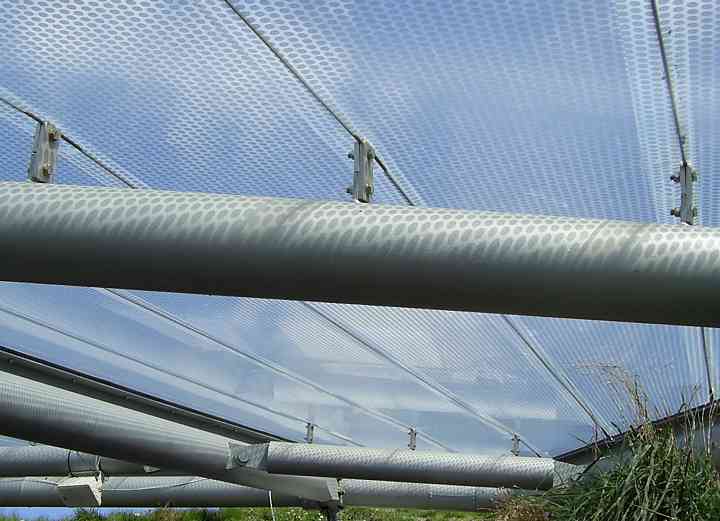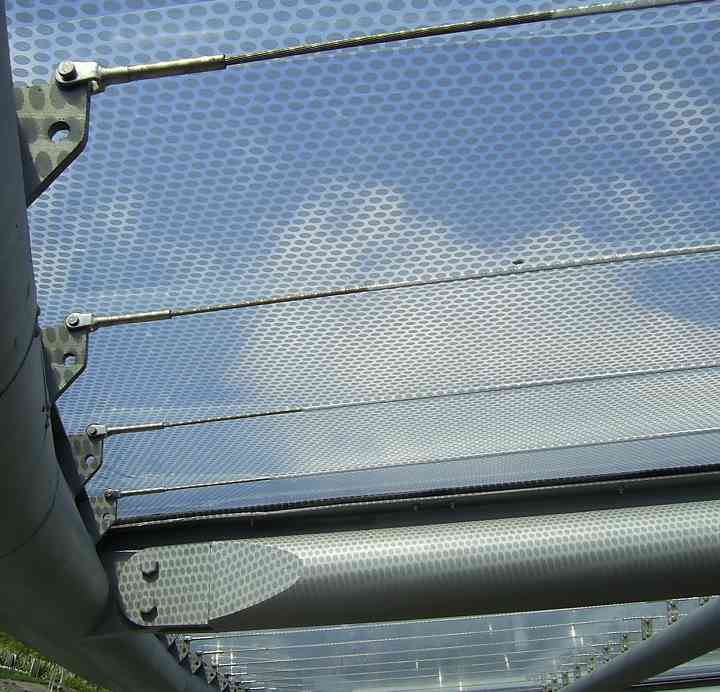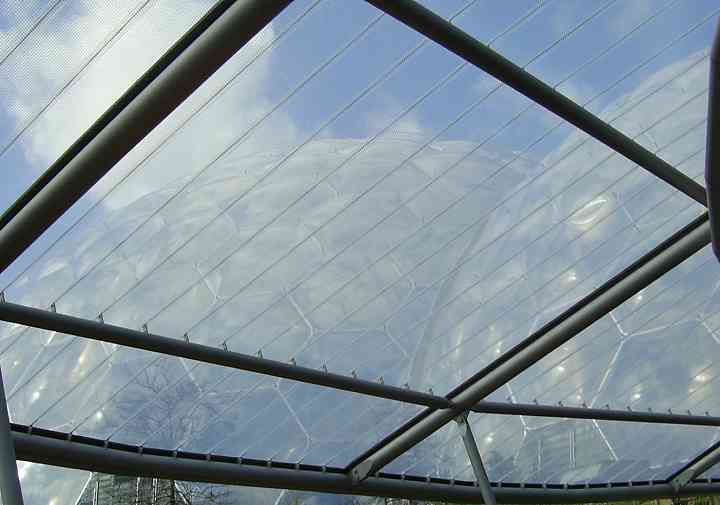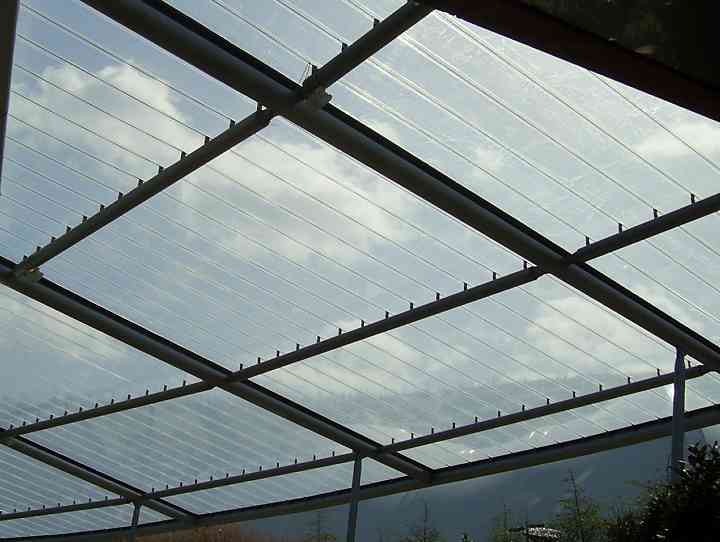Flat pattern
As an alternative to pleating, there's another pattern which
can be used - which also involves a membrane being stabilised
by rows of parallel cables.
Photographs
The following picture illustrates the basic pattern.

Cable-stabilised roof
Parallel cables support the structure against both upward
and downward perturbations.
They do this by running through cable sheaths - which are glued,
welded or stitched to the bottom of the membrane.
Where the cables themselves need stabilising, they pass
through holes made in the strips, are anchored, and then
pass back through another hole.

Cable-stabilised roof

Cable-stabilised roof

Cable-stabilised roof
Pros and cons
This pattern has some adavantages - and some disadvantages -
when compared with pleating patterns which use ridge cables
and valley cables.
Advantages
- The flat pattern is better at making completely flat
sheets of material;
- The membrane is even less likely to require patterning
than with pleated designs;
- The flat pattern works better with rigid and semi-rigid
materials; materials that do not take kindly to being folded
or bent;
- The cables are kept on the inside - this is good because
running cables on the outside of a structure exposes them to
corrosion - and affects the exterior surface in a manner
that might retain water and cause corrosion or thermal
damage;
- Forces applied by the cables to the membrane are
minimized - which is likely to help prevent wear and tear.
By contrast in pleated patterns the valley cables typically
do without anchoring - and are stabilised by the membrane -
resulting in considerable forces between the membrane and
those cables.
Disadvantages
- The flat pattern makes no effort to prevent horizontal
surfaces forming - whereas pleating usually helps to prevent
pooling by tilting surfaces away from the horizontal plane;
- The flat pattern has considerable additional
construction costs - primarily due to the cable sleeves that
need to be cut, and attached in precisely the
correct places;
- Assembly is also more complex - due to the need to pass
the cables through the sleeves;
- Use of pleated patterns tends to result in membrane
surfaces which have at least some curvature - and
this helps stabilise the membrane. By contrast, the flat
pattern is flatter and less curved - and is consequently
more likely to oscillate and ripple;
- In pleated patterns, tension in the membrane causes
slight curves in the cables - which prevents them
from oscillating up and down between their anchors. No such
effect is present in the flat pattern - there is practically
no force transmitted from the membrane to the cables. As a
result in the absence of regular stabilisation the cables
are more likely to move up and down;
- Tensioning the membrane of pleated structures in at
least one dimension can often be done by tightening the
valley cables. This is relatively convenient - but is not
possible with the flat pattern.
Links
Eden project use of the pattern 1
Eden project use of the pattern 2
Eden project use of the pattern 3
|